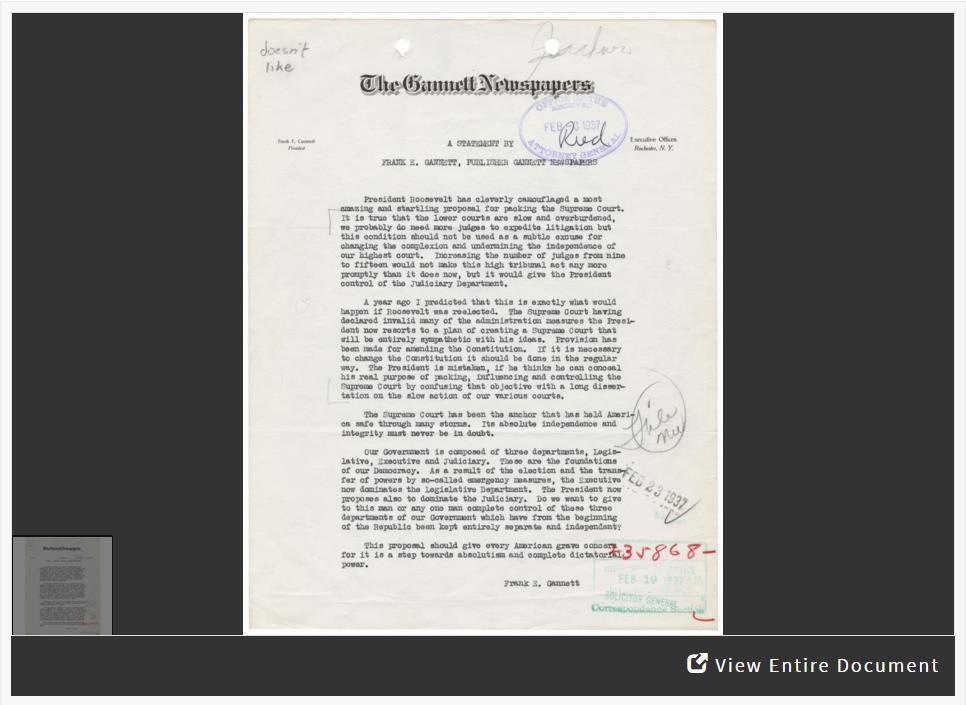This activity presents students with a 1937 letter written by newspaper publisher Frank Gannett opposing President Franklin Delano Roosevelt's plan to "reorganize the judiciary" (also known as his "court-packing" plan). Students will read and analyze this letter to understand Gannett's perspective on this controversial issue.
Suggested Teaching Instructions
This activity can be used during a unit on the New Deal or separation of powers. For grades grades 9-12. Approximate time needed is 30 minutes.
Ask students what they already know about the Supreme Court. If needed, provide leading questions related to its role in the Federal government. These can include:
- What does the Supreme Court do?
- How does one become a Supreme Court justice?
- How many Supreme Court Justices are there?
- How long do Supreme Court Justices serve?
- What is the proper relationship between the Supreme Court, Congress, and the President?
At the conclusion of the discussion, students should be aware that the Supreme Court interprets the law and is the final judge of constitutionality as part of judicial review, that the President nominates justices to the Supreme Court with the consent of the Senate, that there are currently 9 Supreme Court Justices (though this has varied over time from 6 to 10, there have been 9 justices since 1869), and that justices serve for life unless they are impeached, resign or retire.
Direct students to read the letter from Frank Gannett paying particular attention to the following questions:
- What was Gannett's purpose in writing this document?
- What claims does Gannett make in this letter?
- What evidence does Gannett provide to support his claims?
Discuss their findings. Ask students to explain the most and least valid claims that Gannett made in his letter.
Extension Activity: Assign students to read
President Franklin D. Roosevelt’s fireside chat on the reorganization of the judiciary. Ask them to respond to:
- How does FDR's fireside chat compare with Gannett?
- How does he respond to the type of criticism that people like Gannett were making?
- Which argument do you find more convincing—FDR's or his critics'? Why?
Extension Activity: After reading FDR's Fireside Chat and Gannett's letter, ask students to imagine they are concerned citizens in 1937. They should write a letter to the editor for publication in a Gannett newspaper supporting either his ideas or FDR's plan to add 6 justices to the Supreme Court. Instruct them to address specific claims made by Gannett in his letter or FDR in his fireside chat in their letter.
This activity was adapted from an article published on www.archives.gov/education and in the National Council for the Social Studies (NCSS) publication Social Education
: Gray, Leslie and Wynell Burroughs. "Constitutional Issues: Separation of Powers." Social Education 51, 1 (January 1987): 28-30.




